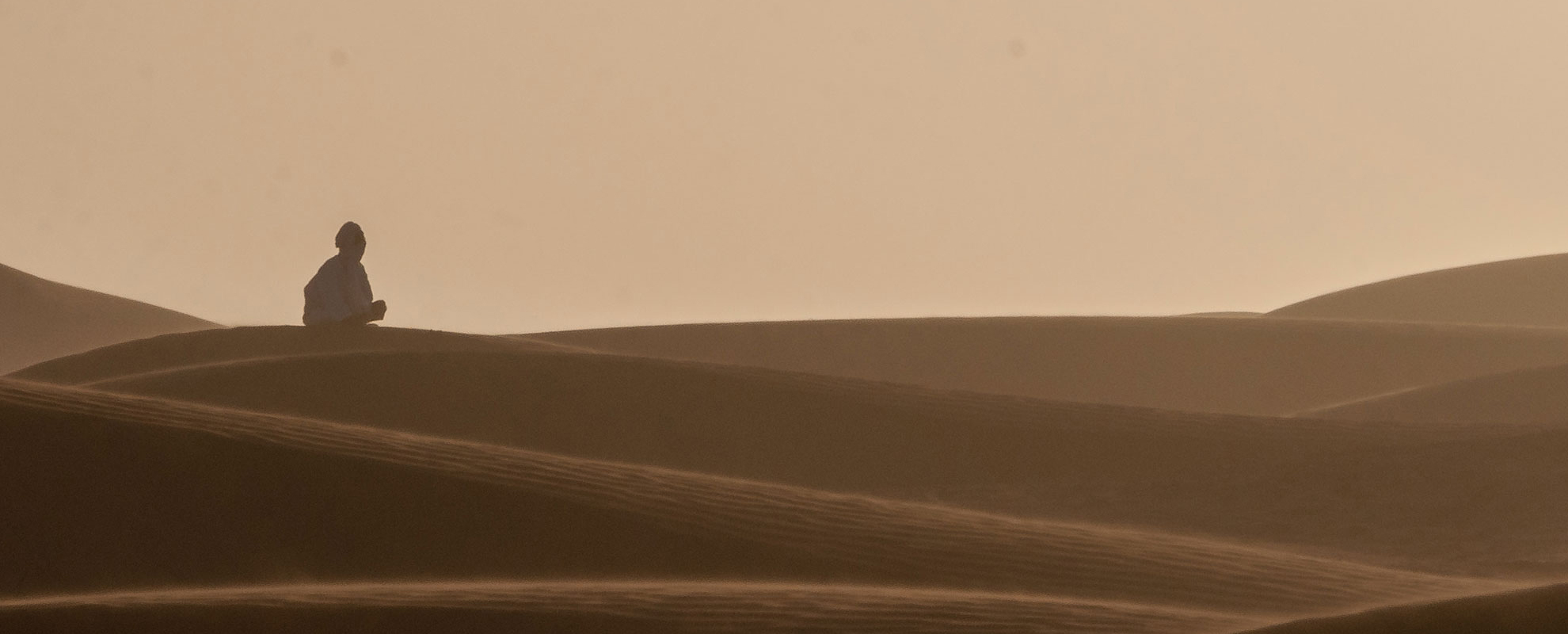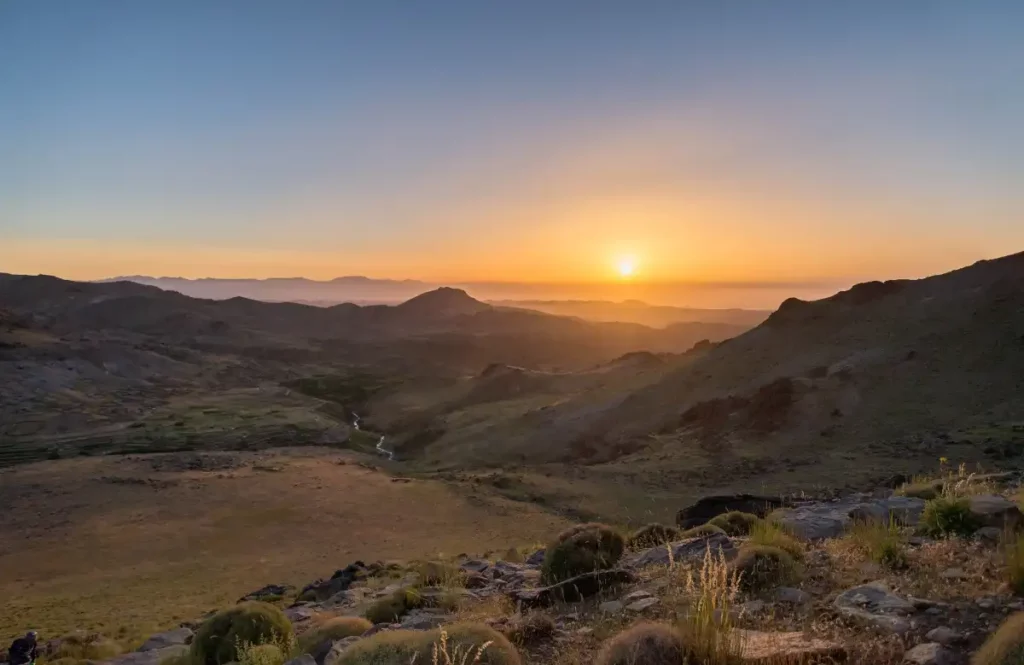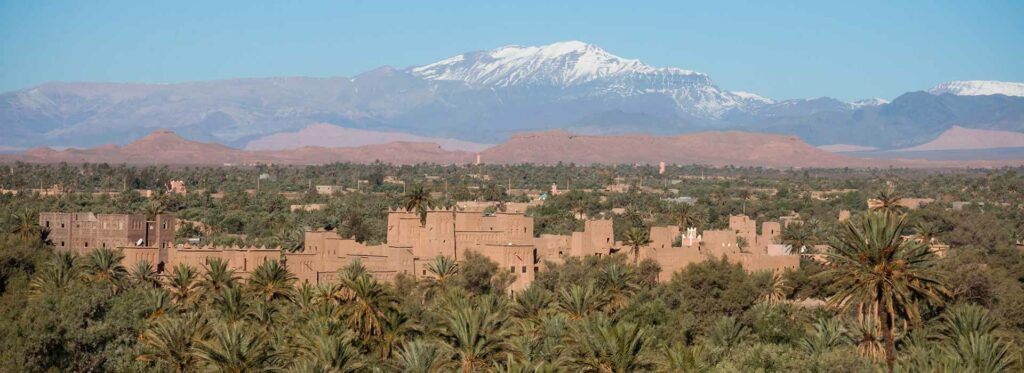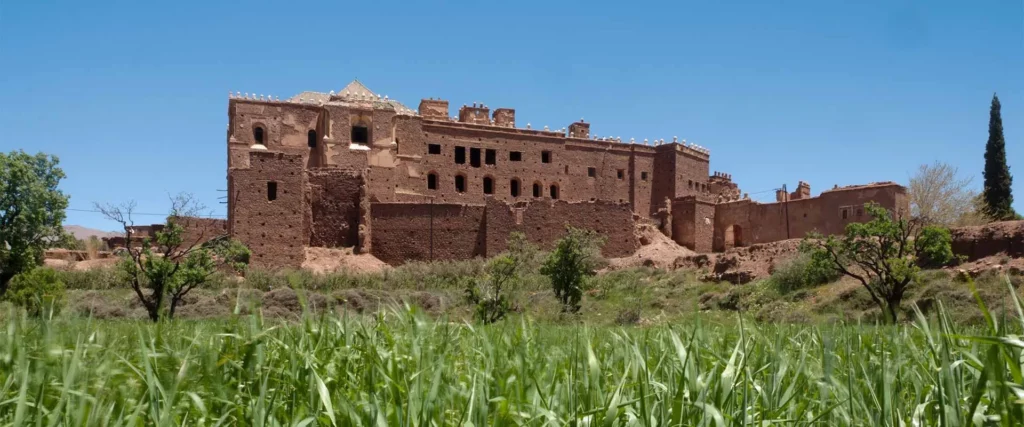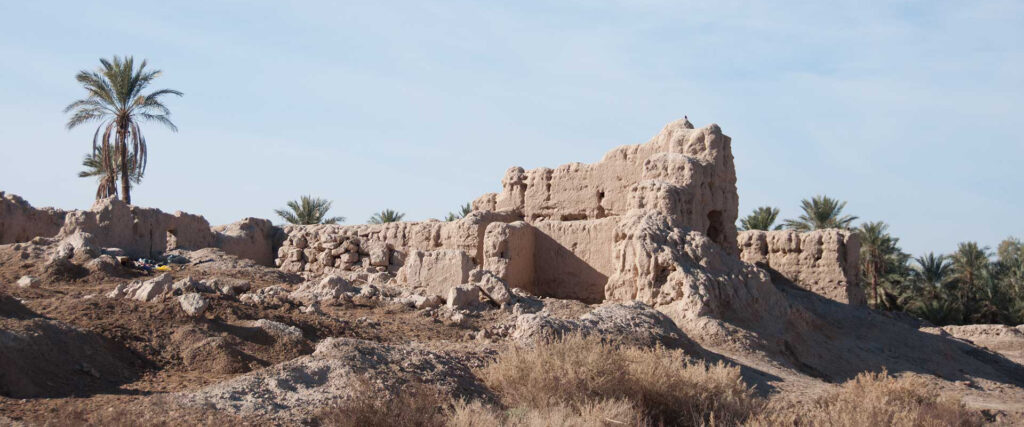Only the dunes attempt to embody the reassuring movement of life to the extent that some have sought to perceive in this still eternity the sole space where one could finally escape, forget oneself and others, even lose oneself, and erase one’s existence. Adorned with the trappings of myth and exoticism, the desert displays an enchanting yet paradoxical beauty, for its charm is a bountiful source of inspiration that stimulates the senses, the mind, and even the spirit.
And yet, the desert tells its own story and reveals its secrets to the sincere gaze of an attentive traveler or a seasoned inhabitant. French writer and poet Edmond Jabès testifies:
« Do not seek to read in the desert. You would find there all the books buried in the dust of their words. »
Edmond Jabès
In reality, the Sahara Desert is a space where ethnicities and peoples, customs and beliefs have constantly intersected and mingled. All human desires have been exchanged there, just as ideas and dreams have, weaving over the centuries a majestic network between an ever-imposing Nature and humans fiercely perched on their perpetual quest for wandering and refuge, clinging to their atavistic thirst for adventure, their insatiable need for power and wealth, or forever frozen in their aspiration to re-enchant their existence on this Land of suffering.
The word “Sahārā” means “vast area devoid of vegetation” in Arabic. The name “Tiniri” (or Ténéré) means “large extended plain, without mountains or dunes, flat desert” in Tamacheq, the Tamazight language of the local Berber populations, also known as Tuaregs.
Ultimately, this vast territory with its apparent emptiness has been an essential component of Africa’s history, serving as a borderland and gateway between all the regions that border it, from North to South and from West to East, from the Maghreb to Egypt and all the sub-Saharan countries.
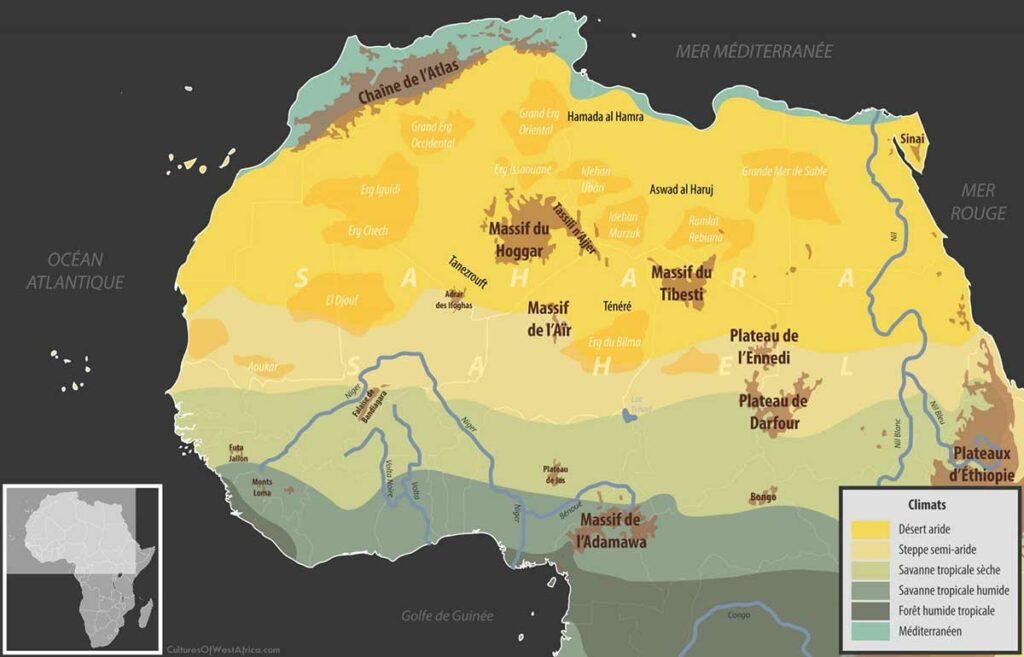
Once upon a time, the Sahara offered humanity a vibrant garden of life
The Sahara is a vast desert covering most of northern Africa. Extreme water scarcity, rare precipitation, and abundant sand are its main features. However, the current appearance of the Sahara is nothing like what it used to be. It is the territory of a fabulous history of natural transformations to which human life always seeks to adapt.
100 million years ago, the Sahara was covered by the waters of the paleo-ocean Tethys. The regular cycle of glaciations alternated between extreme aridity and lush greenery of its lands. But nearly 10,000 years ago, it froze in benevolent allure, covering itself with lakes, rivers, forests, and a vast wooded savannah or grassy plains inhabited by elephants, giraffes, large predators, crocodiles, hippos… There, humans hunted and fished, and then harvested and gathered what nature abundantly provided. The oldest testimonies that have reached us date back 8,000 years and consist of rock engravings depicting hunters armed with bows and arrows pursuing game.
It is in this generous Sahara that humans live, as other groups will elsewhere on the planet, this formidable existential transformation that gradually leads them to become sedentary farmers and nomadic herders. It is the Neolithic revolution that flourishes here. Domestic cattle then appear in scattered engravings in this still green Sahara. Humans with dark skin, slender and sporting a small goatee, coexist with others with lighter skin, probably coming from the East and bringing with them the horse and later the camel.
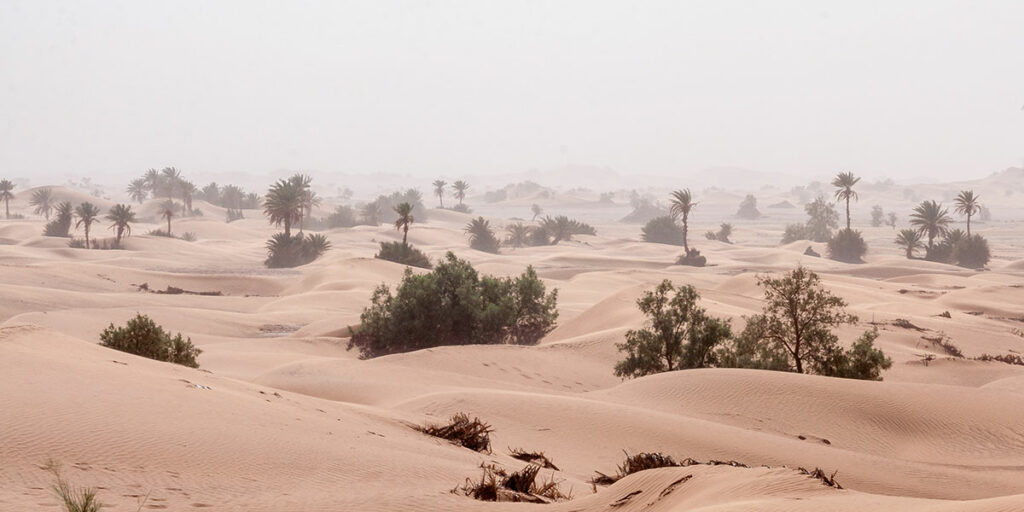
The Sahara, crucible of Berber peoples
Around 6,000 years ago, the Sahara entered a new phase of aridity that has been increasing ever since. Hippopotamuses and elephants disappear from the rock paintings of this time and are replaced by a previously unknown form: the horse, shown harnessed to a two-wheeled chariot under the command of warriors armed with javelins and shields.
Human prehistory slowly comes to an end and launches into its Antiquity. Humans continue their adventure by forming peoples here and there, united by a common language and cultural gestures. The Berber adventure can begin, with the heart of the Sahara being its crucible, pulsating with the mixture of these nascent peoples. Funerary monuments and rock art now serve as the archive of all these human adventures born from the desert.
The first to establish an organized society with its rules, customs, and values were called the Proto-Berber cattle herders. Known not only as excellent hunters, they gradually asserted an identity as intrepid warriors, imbued with a certain nobility of spirit that bore the seeds of Berber elegance, which would flourish over the centuries. These early Berber peoples evolved to form others who were then known as Libyans, Garamantes, and Gétules. One particular group would become emblematic of the Sahara. They were known as Imohagh and would later be called by the Arabs the Touareg. A veiled-faced people, they preserved the use of the Libyan script, which would later become Tifinagh, from antiquity to the present day.
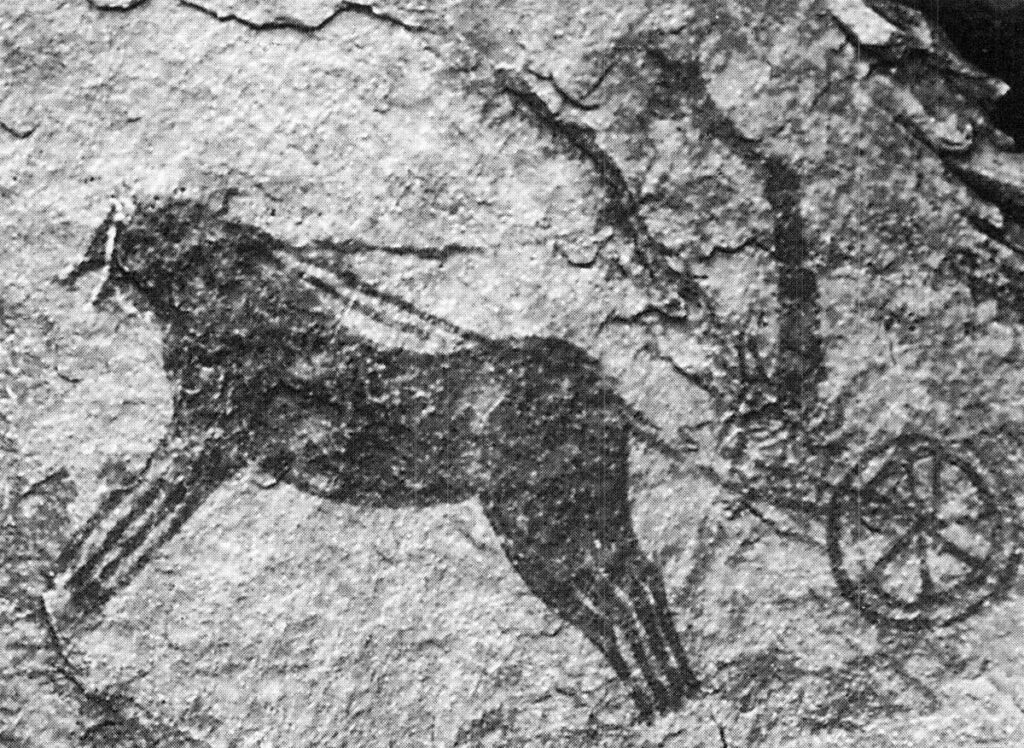
Others, such as the Zenata and the Sanhaja, confederations of nomadic Berber tribes of the Sahara, would have a major influence on the history of North Africa. The Zenata would be directly responsible for the founding of Sijilmasa, the great medieval city of the Sahara. The Sanhaja would be responsible for the powerful Almoravid dynasty that ruled over much of the western Maghreb and Al-Andalus, in the Iberian Peninsula, during the 11th and 12th centuries.
The Sahara witnessed the emergence of many other great cities, such as Tegdaoust, the capital of the Berber kingdom of Aoudaghost (present-day Mauritania), founded in the 9th century and conquered by Ghana in 990. The city of Tahert in Algeria, whose name derives from the Berber word meaning “lion”. The city of Tadmekka, which means “resemblance to Mecca” in Berber, or the city of Essouk, “market” in Arabic, and the former capital of Adagh in Mali, predominantly populated by Berbers. The city of Ghadames in Libya, known as the “Pearl of the Desert,” and finally, the city of Chinguetti in Mauritania, renowned as the “city of libraries.”
During the Middle Ages, the Sahara witnessed the formation of several empires such as those of Ghana and Mali, the Songhai Empire in West Africa, and the Kanem-Bornu Empire covering present-day Niger, Libya, and Chad. These empires relied on their mastery of Saharan life and the trans-Saharan trade routes for their power, trading in gold and other commodities.
Further reading : Sijilmassa, la cité mythique qui fit rayonner le cœur vrai du Maghreb
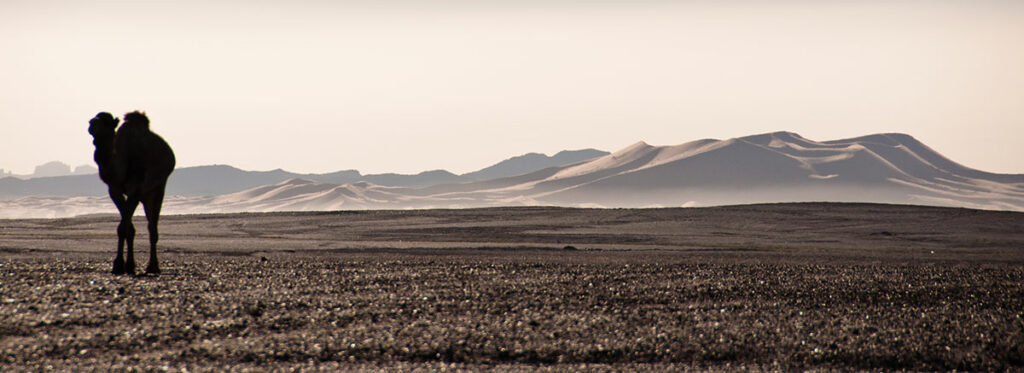
The desertification of the Sahara and the rise of the great nomadism
Over the centuries, the Sahara has transformed from a savanna into a barren desert. This long period of drought led to the disappearance of plant and animal biodiversity. As a result, Saharan populations were forced to migrate to more hospitable peripheral regions and aggregated in oases on the desert fringes, forming the rare green spots where cereal and vegetable crops could still be grown. This transformation in the relationship with the living territory marked the emergence of the great nomadism in the Sahara. Inhabited by nomads determined to remain free by adapting to the harshness of the desert, the Sahara would now become an ocean traversed by caravan routes.
Initially, these tracks crossing the desert were called the chariot route, such as the one opened by the Berber Garamantes tribes between the cities now known as Tripoli and Gao. The arrival of the Phoenicians and the establishment of Carthage nearly 2,800 years ago launched the slave trade through the sands of the desert, which would become, along with gold and salt, the most lucrative trade. The Greeks and Romans developed commercial outposts throughout North Africa, but it was with the Muslim conquest, begun in 647, that cultural and commercial relations between the Maghreb and Saharan and sub-Saharan Africa flourished on all levels.
In the early 8th century, the Ibadi Berbers were the main architects of the expansion of long-distance trade. They put in place all the components of this trade with the opening of various caravan routes and the control of caravan terminals both north and south of the Sahara, until the mid-13th century.
The gradual development of maritime trade and colonial expansion led to a lasting weakening of trans-Saharan exchanges and the progressive impoverishment of the populations involved. The arrival of Europeans somewhat revitalized interest in the Sahara, especially in its exotic dimension, but without allowing it to revive its former splendor. Interest in the mineral resources of the Saharan subsoil remained an insurmountable constraint.
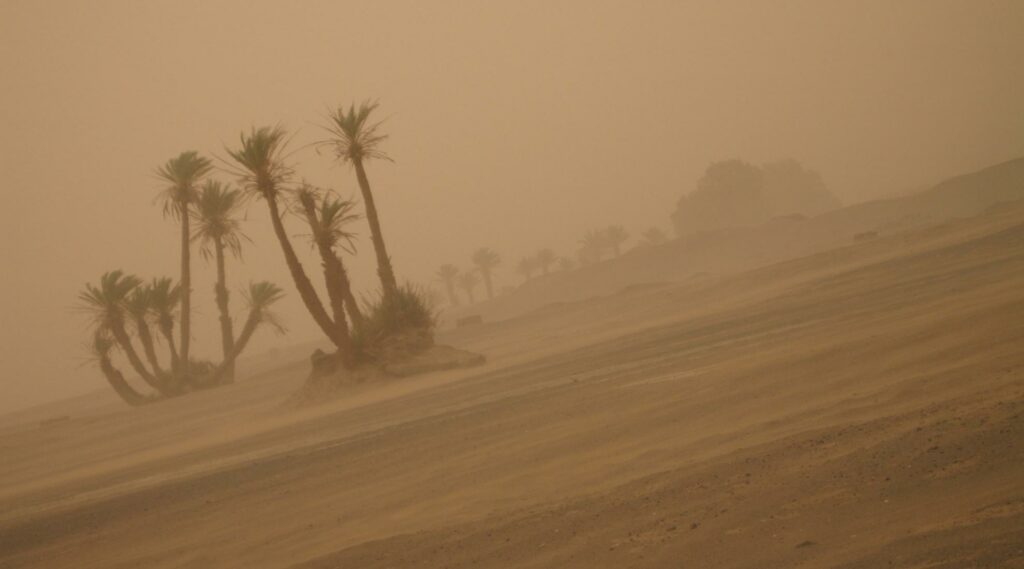
A story constantly to be told for what it bears witness to our humanity
Southeast-morocco.com will unfold, article by article, the narrative of this marvelous tale of the Sahara, in perpetual evolution since time immemorial: a birthplace and cradle of peoples and civilizations, a space for encounter and blending of humanity, a crossroads of their ambitions and aspirations. A journey through time to explore the history of our humanity in Africa and the African dimension within the Maghreb and Morocco in particular.
An enlightening perspective fostering recognition and reconciliation with our shared history, so that once again, the myriad hues of our true humanity may gleam on the satin sands of the vast Sahara.
Photo credits : Abdellah Azizi / azifoto.com
